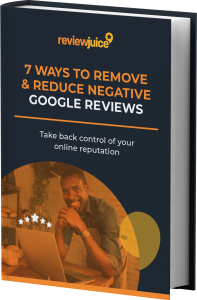What are the most effective channels?
The most appropriate and responsive channels will depend on your product / service as well as the customer experience. But all of the below channels can be very effective
SMS
Though email doesn’t deliver the same open and response rates as SMS, it does have a couple of distinct advantages:
- 61% of consumers prefer a brand to contact them by email
- Email can live in an inbox forever, so is potentially more visible with a longer shelf life than SMS
Email also provides a variety of tactical opportunities unavailable to SMS, as well as the potential to influence higher search engine ratings:
- Whereas SMS need to be short to be effective, this is not always the case with email and a review request can be embedded into many different types of email communications from invoices to monthly newsletters
- Email also provides the opportunity to showcase ratings from other customers. A high review score from many reviews can influence unhappier customers to be less harsh with their judgement
- Email also allows the opportunity to include attachments, whether that is photos of the work done as a or value-add information to show ongoing care about the customer experience.
Email provides more creative opportunities than SMS. Ultimately, a combination of email and SMS will deliver the highest number of reviews.
What is the most effective messaging?
Keep it short. Keep it sincere. Personalise where possible.
Explain why the review is important to you and your business.

Face-to-face
Often the most effective channel. It’s harder to ignore a review request when asked personally, especially if the customer is told why their review is valued.
Explain to customers that the company values genuine feedback to help improve their service standard. People are more likely to give feedback if they believe it will be listened to. Avoid at all costs just saying that it is one of your KPIs or even worse your boss has asked you to do it.
Review forms can easily be loaded onto a phone or ipad for the customer to complete immediately. Alternatively, technology exists that offers customers a QR code to scan and complete on their own device.
By dividing the number of reviews received by the number of jobs completed will give you an indication is to the effectiveness of your customer review request program.
In-store / printed materials
If you feel uncomfortable asking customers for a review face-to-face, consider adding a QR code to printed materials that takes users to an online review request form. This could be displayed at the pay counter, included on the receipt, or a simple flyer included with each purchase (we’ve even printed them on pizza boxes!)
Demonstrate you value reviews
Displaying ratings and reviews in prominent places throughout the buyer journey can help reinforce to customers that you take reviews seriously (and so increase the completion rate).
Google has an excellent free tool to help with this – the Google Business Profile Marketing Kit
Assuming you have a Google Business Profile verified and set up, the marketing kit provides complementary designs for posters, flyers, social posts and even stickers to either customise further or download straightaway for free.

Should I only ask for reviews from customers I’m confident will give me a good rating?
When is the best time to ask for customer reviews?
Perhaps unsurprisingly, the best time to ask for reviews is the closest point to purchasing / experiencing your product or service. At the point when the endorphins are at their highest and consumers feel most positive towards your brand.
A deep understanding of the customer journey may though provide interesting insights that refine the timing even further. For example, we run the customer review management program on behalf of a business whose sites are mostly located in shopping centre car parks. The review request activity is integrated with the POS system though we found delaying the review request SMS by an hour was more responsive since customers were unable to reply whilst driving their car.
You can tinker with the timing to find the most responsive timeframe.
Where should I ask for customer reviews?
Google alone accounts for more than half of all online review so Google Business Profile reviews are almost certainly going to be a priority. There are though many other additional sites that should be considered.
Facebook holds 19% of all customer reviews and is especially importance since Google pulls these into their search result “Knowledge Panel”.

Yelp may also be important – not because of the number of people who will visit that platform, but because Apple Maps in particular use their reviews to help rank their own search queries.
There may be other influential third-party review sites customers refer to as part of their decision-making process. For example, Zomato for restaurants, Whitecoat for healthcare practitioners and Judge Your Lawyers for, you guessed it, lawyers. If industry-specific sites are important to a significant proportion of your prospective customers, they should be part of your review process.
Should we incentivise customers to leave a review?
No. Absolutely not. Never. Reviews given because of a reward are usually easy to spot. Consumers are generally very good at noticing unauthentic reviews and all credibility is immediately shattered.
Is there a way to easily operationalise a customer review program?
Yes, there is.
Review Juice is an easy-to-use reputation management platform that uses customer reviews to drive more sales.
Used by hundreds of businesses across Australia and New Zealand, Review Juice helps clients request, reply to, and amplify customer reviews.
This process provides greater brand credibility in the eyes of Google which improves search engine rankings, and more social proof for prospective customers which lifts conversion.
Though we fiercely oppose the concept of review gating, we do offer unhappy customers the opportunity to give feedback direct to the business which naturally reduce the number of negative reviews posted.
- Online Reputation Management
- Gartner
- Review Trackers

